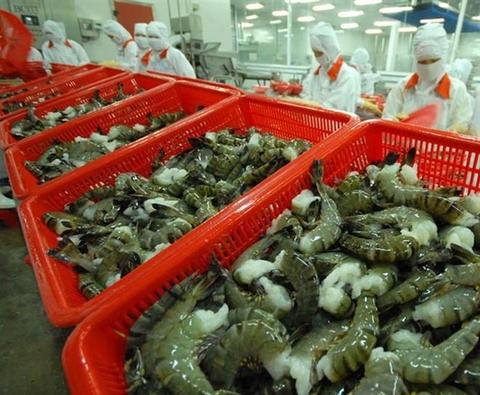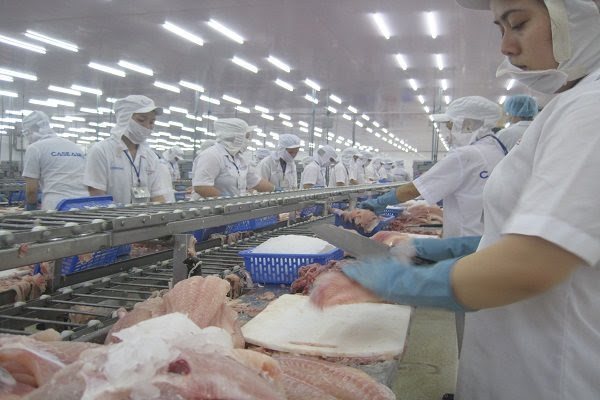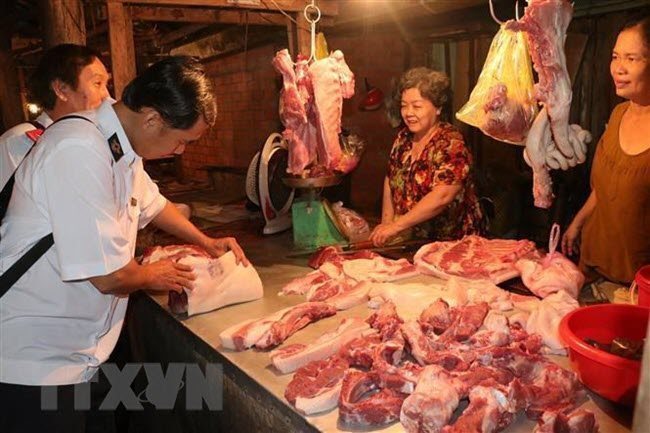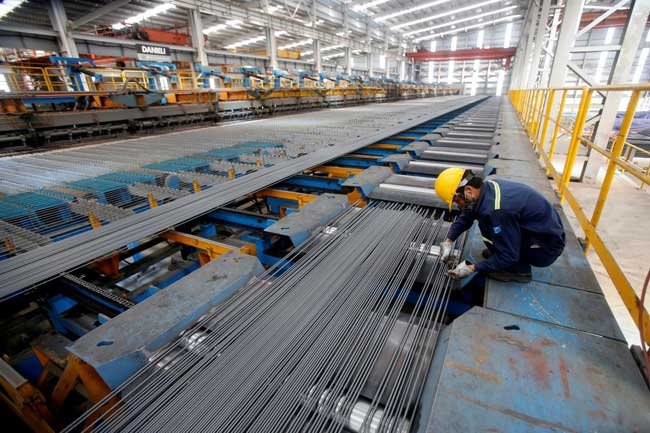Viet Nam to promote shrimp exports to EU next year
Viet Nam to promote shrimp exports to EU next year
The EU is a potential market for Viet Nam's shrimp industry next year because it is the largest shrimp market in the world, while the shrimp production of this bloc has not met its demand, according to domestic seafood experts. 
If the domestic shrimp industry takes advantage of preferential tariff and implements rules of origin under the EU-Vietnam Free Trade Agreement (EVFTA), Viet Nam's shrimp exports to the EU will increase from next year, said Truong Dinh Hoe, general secretary of the Viet Nam Association of Seafood Exporters and Producers (VASEP).
Hoe said, according to the EVFTA signed on June 30, 2019, the tariffs of most raw shrimp, including fresh, frozen and chilled products, imported from Viet Nam into the EU will be reduced from the basic rate of 12-20 per cent to zero as soon as the agreement comes into effect, expectedly next year. Meanwhile, import tariffs of processed shrimp will fall to zero after seven years.
With those tariffs, Viet Nam has many advantages in exporting its shrimp products to the EU, according to the association. Currently, the EU accounts for about 31 per cent of total world shrimp exports and 22 per cent of Viet Nam's shrimp exports.
To take advantage, the VASEP said that immediate and long-term requirements are to create a certified shrimp supply with competitive prices and build a Vietnamese shrimp brand.
Therefore, the shrimp industry needs help from the Ministry of Agriculture and Rural Development and the General Department of Fisheries to control the shrimp farming process and prevent the use of banned chemicals during production. The sector also needs assistance in re-arranging shrimp farming areas and creating large-scale farms and cooperatives according to international aquaculture standards.
It should also take advantage in reducing import tariffs of high-class processed food from the basic rate of 20 per cent to 7 per cent under the Generalised System of Preferences Treatment (GSP) that is the tariff for developing countries.
For example, the EU’s basic import tariff of 20 per cent is imposed on boiled shrimp product of all countries, but the rate for the Vietnamese boiled shrimp is only 7 per cent under the GSP tariffs. This will increase competitiveness for Vietnamese boiled shrimp and also being a higher value for this product. The advantage will increase the purchase price of raw material, leading to more income for farmers. The farmers will have funds to improve the quality of raw material under international standards.
The Viet Nam Trade Office in Belgium said Vietnamese export enterprises need to have information on EU standards if they want to enter this market. Shrimps can only be exported to the EU if they are from countries licensed to export to the EU and farmed at registered farms with EU certifications.
The businesses need to comply with EU food labelling regulations to ensure consumers receive the information they need to make decisions when buying food, including product names and lists of ingredients, including additives.
According to the General Department of Fisheries, shrimp prices have increased again because the EU is promoting seafood in the last months of 2019. However, exports to this market in the second half of the year could not recover as expected.
The VASEP said Viet Nam’s shrimp export value in the first 10 months this year decreased by 6.4 per cent year-on-year to US$2.78 billion. The reduction was due to high supply at home and abroad. Meanwhile, lower demand and high supply in the world market also contributed to the drop in the global export price.
Viet Nam’s shrimp exports to the EU fell by 20.8 per cent in the first nine months, of which exports to the UK dropped 14.4 per cent, to Germany by 5.8 per cent and to the Netherlands by 40.8 per cent.
Viet Nam will promote shrimp exports to EU next year. Photo baodautu.vn
The EU is a potential market for Viet Nam's shrimp industry next year because it is the largest shrimp market in the world, while the shrimp production of this bloc has not met its demand, according to domestic seafood experts.
If the domestic shrimp industry takes advantage of preferential tariff and implements rules of origin under the EU-Vietnam Free Trade Agreement (EVFTA), Viet Nam's shrimp exports to the EU will increase from next year, said Truong Dinh Hoe, general secretary of the Viet Nam Association of Seafood Exporters and Producers (VASEP).
Hoe said, according to the EVFTA signed on June 30, 2019, the tariffs of most raw shrimp, including fresh, frozen and chilled products, imported from Viet Nam into the EU will be reduced from the basic rate of 12-20 per cent to zero as soon as the agreement comes into effect, expectedly next year. Meanwhile, import tariffs of processed shrimp will fall to zero after seven years.
With those tariffs, Viet Nam has many advantages in exporting its shrimp products to the EU, according to the association. Currently, the EU accounts for about 31 per cent of total world shrimp exports and 22 per cent of Viet Nam's shrimp exports.
To take advantage, the VASEP said that immediate and long-term requirements are to create a certified shrimp supply with competitive prices and build a Vietnamese shrimp brand.
Therefore, the shrimp industry needs help from the Ministry of Agriculture and Rural Development and the General Department of Fisheries to control the shrimp farming process and prevent the use of banned chemicals during production. The sector also needs assistance in re-arranging shrimp farming areas and creating large-scale farms and cooperatives according to international aquaculture standards.
It should also take advantage in reducing import tariffs of high-class processed food from the basic rate of 20 per cent to 7 per cent under the Generalised System of Preferences Treatment (GSP) that is the tariff for developing countries.
For example, the EU’s basic import tariff of 20 per cent is imposed on boiled shrimp product of all countries, but the rate for the Vietnamese boiled shrimp is only 7 per cent under the GSP tariffs. This will increase competitiveness for Vietnamese boiled shrimp and also being a higher value for this product. The advantage will increase the purchase price of raw material, leading to more income for farmers. The farmers will have funds to improve the quality of raw material under international standards.
The Viet Nam Trade Office in Belgium said Vietnamese export enterprises need to have information on EU standards if they want to enter this market. Shrimps can only be exported to the EU if they are from countries licensed to export to the EU and farmed at registered farms with EU certifications.
The businesses need to comply with EU food labelling regulations to ensure consumers receive the information they need to make decisions when buying food, including product names and lists of ingredients, including additives.
According to the General Department of Fisheries, shrimp prices have increased again because the EU is promoting seafood in the last months of 2019. However, exports to this market in the second half of the year could not recover as expected.
The VASEP said Viet Nam’s shrimp export value in the first 10 months this year decreased by 6.4 per cent year-on-year to US$2.78 billion. The reduction was due to high supply at home and abroad. Meanwhile, lower demand and high supply in the world market also contributed to the drop in the global export price.
Viet Nam’s shrimp exports to the EU fell by 20.8 per cent in the first nine months, of which exports to the UK dropped 14.4 per cent, to Germany by 5.8 per cent and to the Netherlands by 40.8 per cent.




















